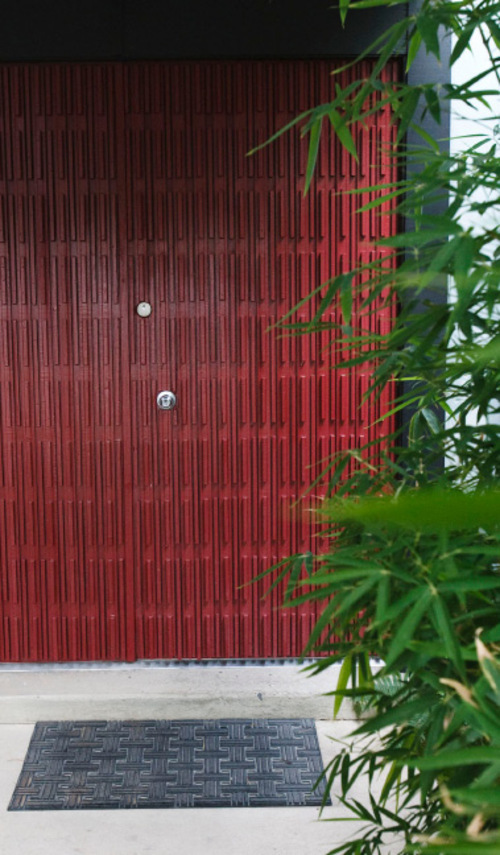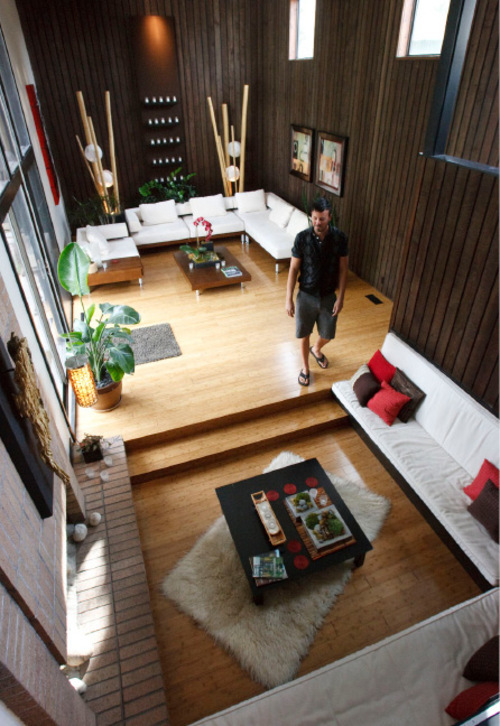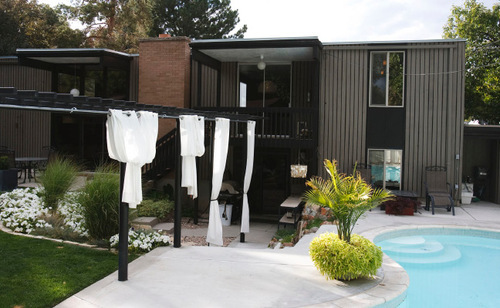This is an archived article that was published on sltrib.com in 2010, and information in the article may be outdated. It is provided only for personal research purposes and may not be reprinted.
In 1963, when nondescript tract housing was spreading across the country, architect Ronald Molen had a different vision.
"I remember going to the zoo with my kids," Molen said, "where I saw these chimpanzees just having a ball. I thought they had a more stimulating environment than kids."
So Molen set out to create kid- and family-friendly housing that in turn would nurture a strong, social community.
That grand experiment played out in West Valley City's Westshire neighborhood, an area now bounded by 3800 South, Interstate 215, 4100 South and Constitution Boulevard I (2700 West).
Now 81, Molen reminisced in advance of a neighborhood tour being offered Saturday, part of the Utah Heritage Foundation's effort to recognize post-World War II "modern" architecture.
The homes initially sold for $17,000 to $25,000 and featured custom front doors, cozy conversation pits centered around a fireplace, eat-in kitchens and formal dining rooms, children's rooms with built-in beds above walk-in hobby closets, master bedrooms with built-in beds and dressers, interior open-air atriums and more.
Molen's sense of whimsy surfaced with slides and firefighters' poles that kids could use to descend from the upper level. Molen said his wife frequently used the pole instead of the steps.
"It was efficient," Molen said. "Some adults are still kids — you don't want to lose that fun."
Molen described his partnership close to 50 years ago with contractor Vern Hardman, a collaboration that yielded Westshire's 160 homes, plus hundreds of others around the Salt Lake Valley — and some as far away as Columbia, Md.
"He gave me free rein with the artistic attributes," Molen said, "and he was a very good client — the best. I was sort of the screenwriter and he was the producer/director."
Hardman, 83, also remembers those years fondly.
"I let him be independent," Hardman said. "Ron had an eye. He drew and we worked together. And it worked — it really worked."
By the mid-1970s, their paths diverged. Molen began designing commercial buildings along 500 South and West Temple in Salt Lake City, and Hardman developed ground in Park City.
But both spoke of the sheer fun that Westshire proved to be. "In it's heyday, we had parades in Westshire," Hardman said. "It was quite a community."
Evidently it still is.
"I would call it a tight-knit neighborhood," said Judi Morrell, a real estate agent who moved in 13 years ago. "We have a lot of neighborhood parties where we just tour each other's houses to see what everyone is up to."
Morrell said she dreamed of living in a Molen-designed home for 30 years, and finally it happened.
"The floor plans were very unique — very different from your standard rambler, split-entry and everything else being marketed then," Morrell said. "They were very livable."
The April 1973 edition of Family Circle magazine featured a Molen design, touting that "You could move into this dramatic seven-room house with little more than a toothbrush." In 1974, Molen published his architectural philosophy in a book titled House, Plus Environment. In its foreword, editors spoke of his "deep concern about the effect of the house itself upon the quality of the interactions within the family, and in turn the interactions of the family within the community."
Kelly Lamoreaux, also a real estate agent, settled into the west-side community three years ago.
"I knew about this neighborhood and followed it, but wasn't really considering a home here," Lamoreaux said. "But I did a preview of this one and thought, 'I have to get it.' "
So far, he's thrilled with his purchase.
"I really love it here — there's such a strong sense of community," Lamoreaux said, reveling in his home's open floor plan.
"I use it more than my sofa in the living area," Lamoreaux said of Molen's trademark conversation pit. "At Christmas, that's where we gather."
Molen retired in 1990, but is happy his handiwork continues to have a positive impact.
"We tried to develop a style that had an urban village identity, so it was very clear that your area was not like anyone else's," Molen said. "We evidently succeeded because people still live there and are proud of their houses."
Mini-Mod tour of Westshire neighborhood
P On Saturday from 4 to 6 p.m., the Utah Heritage Foundation will host a four-home tour launching from 2434 W. 3965 South in West Valley City. For non-foundation members, tickets cost $10 and can be purchased at the beginning of the tour.
The tour is part of a larger effort to recognize post-World War II architecture.
For more information, call 801-533-0858 or log on to utahheritagefoundation.com









